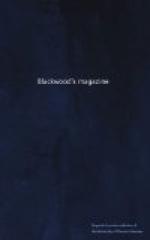1st, We have those which, recently excluded from the ova, are still invisible to common eyes; or, at least, are inconspicuous or unobservable. Being weak, in consequence of their recent emergence from the egg, and of extremely small dimensions, they are unable to withstand the rapid flow of water, and so betake themselves to the gentler eddies, and frequently enter “into the small hollows produced in the shingle by the hoofs of horses which have passed the fords.” In these and similar resting-places, our little natural philosophers, instinctively aware that the current of a stream is less below than above, and along the sides than in the centre, remain for several months during spring, and the earlier portion of the summer, till they gain such an increase of size and strength as enables them to spread themselves abroad over other portions of the river, especially those shallow places where the bottom is composed of fine gravel. But at this time their shy and shingle-seeking habits in a great measure screen them from the observance of the uninitiated.
2dly, We have likewise, during the spring season, parr which have just completed their first year. As these have gained little or no accession of size during the winter months, owing to the low temperature both of the air and water, and the consequent deficiency of insect food, their dimensions are scarcely greater than at the end of the preceding October: that is, they measure in length little more than three inches.—(N.B. The old belief was that they grew nine inches in about three weeks, and as suddenly sought the turmoil of the sea.) They increase, however in size as the summer advances, and are then the declared and admitted parr of anglers and other men.
3dly, Simultaneously with the two preceding broods, our rivers are inhabited during March and April by parr which have completed their second year. These measure six or seven inches in length, and in the months of April and May they assume the fine silvery aspect which characterizes their migratory condition,—in other words, they are converted into smolts, (the admitted fry of salmon,) and immediately make their way towards the sea.
Now, the fundamental error which pervaded the views of previous observers of the subject, consisted in the sudden sequence which they chose to establish between the hatching of the ova in early spring, and the speedy appearance of the acknowledged salmon-fry in their lustrous dress of blue and silver. Observing, in the first place, the hatching of the ova, and, erelong, the seaward migration of the smolts, they imagined these two facts to take place in the relation of immediate or connected succession; whereas they had no more to do with each other than an infant in the nursery has to do with his elder, though not very ancient, brother, who may be going to school. The rapidity with which the two-year-old parr are converted into smolts, and the timid habits of the new-hatched fry, which render them almost entirely




